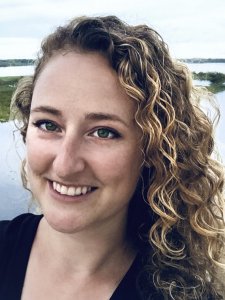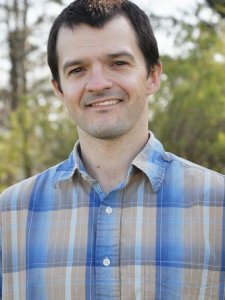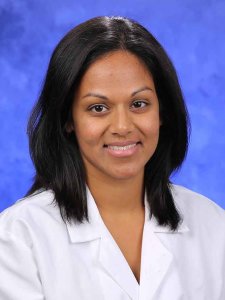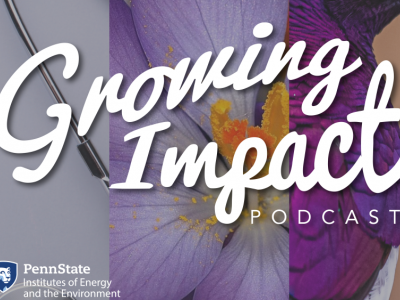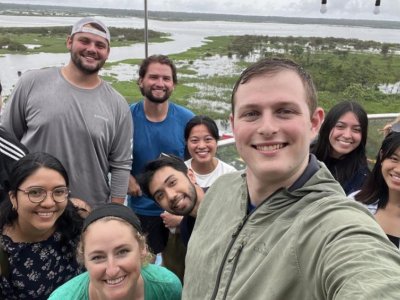A transdisciplinary team of Penn State researchers is exploring how One Health, an approach that recognizes the interconnectedness among human health, ecosystem health, and animal health, may be able to tackle complex health problems facing Pennsylvania.
Transcript
INTRO: We talk about diversity—diversity of thought, diversity of training, diversity of perspectives. That breeds innovation. So we are able to tackle problems from different angles.
HOST: Welcome to Growing Impact, a podcast by the Institutes of Energy and the Environment at Penn State. Growing Impact explores cutting-edge projects of researchers and scientists who are solving some of the world's most challenging energy and environmental issues. Each project has been funded through an innovative seed grant program that's facilitated through IEE. I'm your host, Kevin Sliman.
HOST: On this episode of Growing Impact, I speak with a group of researchers who are working on One Health, which is a transdisciplinary method of recognizing the interconnection among people, animals, the environment, and health. The team shares how collaborating through an expansive theme, such as One Health, can provide new ideas, strategies, and answers for a wide variety of challenges.
HOST: Today on Growing Impact, we have a team of researchers who are working on One Health. I'm actually going to have each of them introduce themselves and their area of expertise. Go ahead, Leann.
Leann Andrews (LA): Hi, I’m Leann Andrews. I'm a landscape architect, and I work in the realm of the environment with health.
Justin Brown (JB): Hello, my name is Justin Brown. I'm a veterinarian that works in the Department of Veterinary and Biomedical Science at Penn State. My area of expertise is in veterinary medicine, specifically wildlife health.
Sona Jasani (SJ): I'm Sona Jasani. I'm an assistant professor in the Department of OB-GYN and I work in human health.
Stephen Mainzer (SM): Hi, I’m Stephen Mainzer, and I work in the Department of Landscape Architecture. My interests are and the decisions dynamics of coupled political and environmental sentiment.
HOST: Let's start with talking about One Health. Could you describe One Health?
SJ: One Health is an approach that is transdisciplinary.
HOST: This is Sona Jasani.
SJ: It recognizes that the health of humans and the health of the ecosystem, as well as animals, are intricately connected. And so what affects one of the component of the health triad will affect the other component. And there are various organizations that seem to endorse this concept. So it's not necessarily a new one or revolutionary. Some organizations like the CDC, the USDA, the American Medical Association, and American Veterinary Medical Association endorse the concept of one health. The way that I like to think about it is that it's a framework to approach problems. And so it's really the foundation of it is based on collaboration and being transdisciplinary so that you have different disciplines looking at complex issues to really think about it in a holistic fashion.
HOST: Could you provide some examples of One Health and maybe where they show up in the world today or in research?
SJ: Yeah, definitely. I think one of the sort of poignant examples for me is illustrated by the CDC. So in 2010 in northern Nigeria, the folks there started noticing that the ducks apparently just began to disappear and no one really knew what was happening. And then a few months later, there were hundreds of children that were actually affected with lead poisoning. And so what researchers in that area found was that what had happened to the duck population was lead poisoning. And they found out that ducks were actually a sentinel indicator for what could happen to the human population. So I think that's a really poignant example as to how and why One Health is really important. If you're just only thinking about human health as affecting humans, and not really looking at other indicators, you're probably not going to pick up on some of these issues that may be affecting certain aspects of the triad, that you could be a little bit more proactive in.
HOST: Why is it important to look at the world through the lens of One Health?
JB: The concept of One Health is quite old.
HOST: This is Justin Brown.
JB: But the term that we're using, “One Health,” is relatively new. But there's an increasing recognition of how important this old concept is. And in part of the reason is when you look at how much has changed globally over the last 30 years. As you said, it's very complex or our world, but it's also very dynamic. And so if you look for humans, how much our population is changing, how we interact socially, where we get our food, where we live—all of that has changed. If we look at animals, how we farm has changed—the pets we keep, you know, we have a lot more exotic animals than we did 30 years ago. How we move animal products. All of that is changing and certainly the environment is no different, if we look at land use or climate change. And so as all those things are changing, it's really dynamic and it's changing sort of the math of how animals, humans, and the environment interact. And probably not surprisingly, we are seeing increasing emerging diseases. That's one example. Sona talked a lot about non-infectious diseases. And that makes sense from a One Health concept because animals, humans, what we're all sort of exposed in the same environments. So if there's a contaminant, then we're probably going to see issues in animals like we do humans. And from an infectious standpoint, we're having increasing emerging infectious diseases. SARS. The original SARS is one example, but certainly some of the influenza viruses, Ebola. A lot of these emerging diseases we're seeing in humans have an origin in animals, particularly wildlife. And so I think all of these things are having an increasing recognition that if we want to be effective, not only in responding, but hopefully preventing some of these diseases, we have to take more of a holistic approach. I can't deal with rabies in wildlife without considering what are the human impacts. Yes, Sona can't deal with some of these diseases that may have an origin and animals without considering what happens on that side of the disease ecology.
HOST: Bringing up that dynamic aspect, I think it's extremely important viewpoint to be thinking about. Are there proponents of or suggestions that maybe we need to scale back. In other words, instead of trying to address the problems that are emerging from all of these dynamic and complex aspects of the world, are there, folks that are like, hey, if we just look at the root of these things, like it's getting more complex, should we simplify?
SJ: I am actually interested in talking about this.
HOST: Here’s Sona again.
SJ: I think that this is one of maybe a misconception of One Health. It seems so overwhelming to think about how do you have all these different disciplines working together to solve a complex health issue? But what's interesting about the history of One Health is that it's not new. We see evidence of One Health dating all the way back to Hippocrates and Aristotle. And, and so we understand throughout the history of time, right, that you know, that this is just common sense, right? If your environment that you're living in is sick, then there's a higher rate of the populations of creatures that are living in that environment are going to be sick as well. And so, you know, if you can whittle down One Health in whatever concept you're using or whatever problem you're using to solve. By using that One Health framework. I think that you have to have it and it’s comprehensible, sort of components, right? So maybe for the problem that you're looking at, you're looking specifically at collaboration, and you're trying to find how to create a system between public health and researchers and academia. And you're trying to figure out how to break those barriers, right? That's One Health, right? And that's very doable and there’s objective measures, right, that you can do. And maybe the problem that you're looking at is more topic based, right? Where you're trying to think of why did a certain infection jump from animal to human and then you can break it down and that sort of comprehensible topic. So I think One Health doesn't always do everything all at the same time. I think that if you are very smart in terms of how you're using One Health and deliberate probably is a better choice of word, then you're actually going to be really effective and what you're trying to solve.
LA: Yeah, and building off of that,
HOST: This is Lee Ann Andrews.
LA: And also building off of what Justin said too, is that there's a large value and thinking about things in a preventive way. And One Health helps us all think about things together around this concept and address some of the health issues that might appear further downstream. So I work in the environmental realm of the triad, the human animal environment triad. And we know both in the Animal Sciences and Human Sciences that the environment is a determinant of health. And so if we're experiencing all kinds of rapid changes in our environment all around the world, including rapid urbanization where humans are expanding their footprint and crashing into more, as a lack of a better word, into the habitats of animals. As though that close proximity has a lot of influence with both on the human and the animal side. It also has a big impact on the changes in the environment as well. So plant communities are changing and weather patterns are changing and streams are changing. And if all interconnected. And if we can start to understand these systems and we can understand what are the cautionary tales that we get through examining animal health. We're examining human health or environmental health. Maybe we can prevent some of the diseases or present some of the health issues even before they even happen. And then we don't have to have this giant army of people trying to address these issues on the other side.
JB: And Kevin, one other thing.
HOST: Here is Justin again.
JB: I'm a wildlife veterinarian by training and you know, as these disease issues come up and they're really complex. We often, if we stay within our little group, the solution seems really simple. So if we take lead for an example and I say, well, we have to do is get rid of lead ballistics or whatever this solution might be. It seems really simple. But then when you realize how interconnected these disease issues are, the become really complex. And so we can have these easy solutions if we stay in our groups. But they're not going to be effective, right? Because they're bringing these other groups. So even though it's inherently makes it much more complicated and sometimes insurmountable. I think it really gets at the actual solutions rather than these sort of abstract—all we have to do is do this or stop this activity. And in a lot of times that's just not possible or not even a good idea. And so I think, you know, even though One Health tends to make things complicated, it's actually going towards the true solutions rather than sort of Band-Aids on larger issues.
HOST: What are some of the One Health, socio-environmental factors in Pennsylvania that your project is investigating?
SM: So I'm quite new to the One Health idea.
HOST: This is Steven Mainzer.
SM: But one of the things that drew me in early on to the project was something that Sona said in one of our early meetings. That as a clinician who works with actual live humans, she has a really good sense through her work that there are environmental factors that affect perinatal health. But she and her team work in clinics, labs, and there are certain skills and knowledge and data that work really well at that scale. I would tend to work at the opposite end of the spectrum where I'm looking at county or state or national databases, but rarely with real humans. And so while we know there are interactions among humans and animals and places, it seems as though there's a really big gap between those scales where there's lots of unseen things that could be happening. Which is why are our team of investigators here is such a diverse group coming from so many different disciplinary backgrounds. And we are supported by our technical advisory committee, who is composed of colleagues from comparative medicine and anthropology and family and community medicine, and the veterinary medical animal sciences and geography. And the role of this diverse group is to help us navigate that messy space in between humans and the environment where we expect to see interactions among these different kinds of social and environmental factors.
HOST: In the project title, the word reconciling show. Could you explain how that is connected to this work and clarify what reconciling means for this project?
SM: Reconciling such a, such a great word for, for this effort.
HOST: Here's Stephen again.
SM: It was Leann’s addition to our proposal that really illustrates how we're trying to come together, as you just said a few minutes ago, to think about things together under this common goal of informing human health. Now on one hand, we have a pretty good idea of what some of the indicators of perinatal health might be and things that we should be recording and looking at. And we're also building a foundation of social and demographic characteristics such as population, age, race, ethnicity, gender, et cetera. And we're gathering the basic landscape characteristics that Justin spoke about a few months ago and that things that are available statewide level landcover, urban-rural classification. And we totally expect to see relationships among all that. So when we think we have a good foundation to start with. But on the other hand, there's a whole lot of things we have to learn about to make this group work. Now the first of which is simply learning how to talk to each other. We're learning that concepts and definitions are going to differ across disciplinary fields. And we've been talking in the last couple of meetings about how perinatal health mean something different when you're talking about humans and animals. The indicators that you might look at, or it could be really quite different. So even when we think we're speaking the same language, sometimes we're talking across each others’. And so we're trying to figure out how do we all have conversations in the same space. Also, the scales and the types of data that are associated with these concepts differ dramatically across disciplinary fields. And so in that sense, the reconciliation process is about trying to find a holistic, cohesive story to tell among all these different perspectives.
HOST: We've touched on this, especially with the complexity of One Health, about having an interdisciplinary team. But I wonder if you have any expansion or anything you'd like to add about how having an interdisciplinary team really helped you find success.
LA: Sure. So traditionally in universities, we are trained and disciplinary silos.
HOST: Here's Leann again.
LA: We get a degree and a certain major specialization, and we take classes this the port that degree. When you have medical schools, veterinary schools, and those who work in the environment, they're actually physically located in different locations that we often don't cross paths. So this stylization was made for a reason. It's helpful to gain specialized skills within one area of knowledge. But it really as we're all pointing out It just doesn't allow us to creatively address the complexity of the real-world systemic problems that we have going on here. So having an interdisciplinary team in our particular project, but also in One Health in general is critical to understanding the nuances of how the humans and the animals and the environment are all linked. I am constantly taking notes during our meetings of “Oh, I didn't know that. Oh, I didn't know that. I didn't know that.” You know, it's like almost every five-minute. It's because I haven't been trained in the way to look at a problem and in that light. And so having all of this, we talked about diversity all the time. Having this diversity of thought, diversity of training, diversity of perspectives that breeds innovation. And so we are able to tackle problems from different angles, from having a team that approaches things from different angles. We actually, we started this Penn State One Health Group and the One Health Scholars program to facilitate these interdisciplinary collaborations here at Penn State, recognizing that we do have barriers within our university, we are siloed. And it's actually quite difficult to work across colleges, campuses for sometimes very real reasons and sometimes very artificial reason. So we're trying hard to break through boundaries within the context of this pilot project.
HOST: What do you hope your project will achieve?
JB: Well, I think we have multiple layers of goals
HOST: Here's Justin again.
JB: The specific focus of the projects really exciting. I think there's some really good work that can be done both on the human and animal side of things, looking at reproductive health and specifically perinatal health. But I think even beyond that, you know, when you look at One Health, we often, I think it's not a hard sell among health organizations and we see a most major state, federal, global health organizations recognizing the importance and getting support to the importance of One Health. And oftentimes, you'll eat when you start to develop these One Health movements, you'll start to get these small groups or come up with a mission statement. Maybe you have some general thoughts on it. And then when you try and implement it, it gets really hard in, and as Stephen said, it gets messy in the early parts where you're trying to speak the same language and learn from each other. I can't believe that after 15 years, I still struggle with trying to figure out what the definition of health is. But part of the process, you know, and I think in the end it gets you to where you want to go. And so I think even as far as beyond just looking at reproductive health, I think one of our hopes is that it creates sorted this scaffolding our network that we can use to move forward with other issues. We're looking at reproductive health. Maybe we move on to environmental contaminants or maybe we move on to infectious diseases next. And so one of the real pillars of One Health is creating relationships and networks and communication. And I think that is probably one of the primary goals of this whole project.
HOST: What our next steps and/or future plans when it comes to project, anything you'd like to discuss or can discuss at this point?
LA: We’re at the beginning stages of this project.
HOST: Here's Leann again.
LA: So the exciting thing is that it's exploratory so that as Justin mentioned, there's a lot that can be unraveled while we're investigating One Health within Pennsylvania, One Health within our disciplines. How to collaborate together. It's all quite exciting. We're at the beginning stages here, so we're allowing ourselves to be open. We'd love to continue each year having continuing the One Health Scholars program, continuing, having an applied project so we can all work in a very tangible way towards working together and also coming up with solutions, recognizing the barriers and getting one step closer to kind of filling those barriers. But the cool thing about One Health is it really is expansive. So we're pretty excited to see it.
HOST: Thank you for having a good discussion on One Health on Growing Impact.
TEAM: It was a pleasure. Thank you so much for happen. Likewise, Thanks so much.
HOST: You've been listening to Growing Impact, a podcast by the Institutes of Energy and the Environment at Penn State. I've been your host, Kevin Sliman. This has been season 2, episode 7. Thank you for listening.

